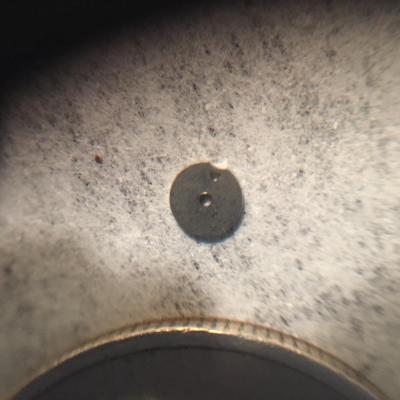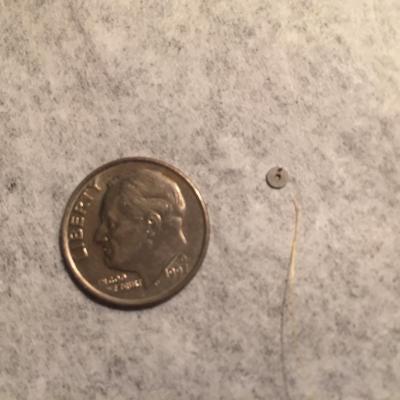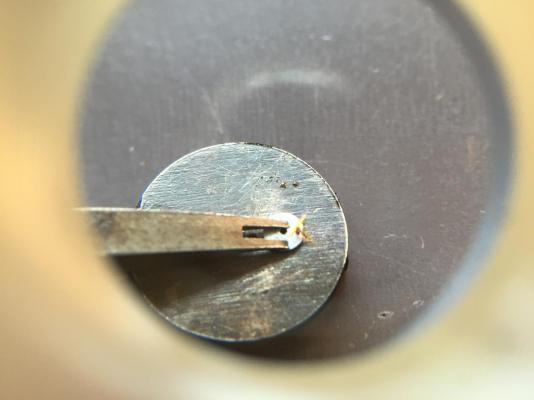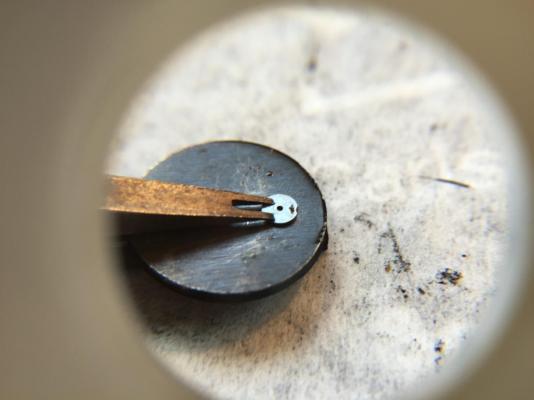Search the Community
Showing results for tags 'Roller table'.
-
An encouragement to newbies, and perhaps a useful trick for veteran watchmakers Last week I replaced an impulse jewel in a roller table for the first time. Hurray!! I feel I'm growing as a watchmaker, although still largely through making mistakes and then saying, "Well, I'm not going to try THAT technique again!" So I want to encourage my fellow newbies that one really can learn how to do these challenging maneuvers. I puzzled for a long time over the techniques by which I would pick up a slick tiny impulse jewel measuring 0.38 mm in diameter, and place it, facing the right direction, precisely at a 90 degree angle into its tiny hole on the roller table. And how would I keep the jewel in place as I added a tiny thread of shellac to the roller table and as I heated it? I figured I had to put the roller table securely in place on top of the heat-transfer device—what is the name of that thing?—and do all subsequent operations on that platform. I'd never be able to transfer the roller table and unsecured jewel from the workbench to the heat-transfer device without the jewel falling out and disappearing. The bigger problem was picking up and moving the jewel. I couldn't get a good grip on it with tweezers. One of the techniques I had read in a standard textbook described getting the flat top of the jewel to adhere to the inner face of the tweezer tip, and then pinch the jewel down into the hole as the other tweezer tip is pushing up from the opposite side of the metal heating table. But that dog wouldn't hunt. The clamps holding the roller table onto the heating table prevented my having maneuvering room to do that. Besides, I couldn't hold the heating table off the work bench, maneuver two tines of the tweezers without dropping the jewel, and still get my loupe close enough to the jewel to see if it was facing the right direction. I considered wetting the outside of the (held together) tweeter tip with water to use water's surface tension—or as my son the chemist corrects me, its dipole moment—to have the jewel adhere to the outer surface of the tweeter tip. But that presented two potential problems. One, the water would likely heap up into too large a droplet on the tweezer, and two, once the jewel had been picked up by the droplet on the outside of the tweezer, it might not easily be released from the wet tip. So...instead of using water, I dipped the tweezer tip in acetone—nail polish remover. My idea was that the acetone would have less dipole moment than water, reducing its tendency to bead up, but still enough dipole moment to pick up the jewel. Also, acetone evaporates fairly quickly, especially when, as in this case, the ratio of surface area to volume is so high. So the adhesion of jewel to tweezer should be declining when—if!—I maneuver the jewel into place and want to separate it from the tweezer tip. This technique didn't make the procedure EASY, but it made it DOABLE for me. The jewel is now securely and properly affixed to the roller table. (The watch still doesn't run, but that's another and sadder story.). I'll upload some before and after photos. Then I began to wonder. Had I merely stumbled across a technique that is already well known and widely used? Or is this a new idea? Also, since I didn't actually run a controlled study, I don't really KNOW if acetone is superior to water for this arcane purpose. So I invite the veteran watchmakers here to share their reflection on this technique, and to report the results of any experiment they are inspired to perform.






